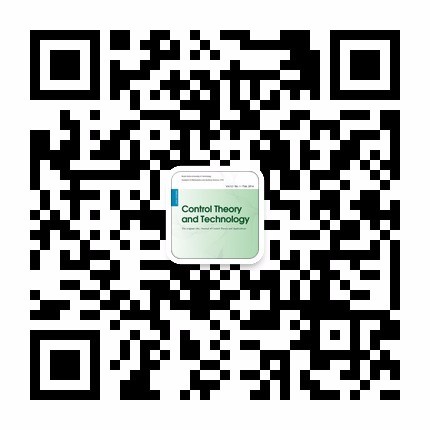| quotation: | | [Copy] |
| | Fuguo Xu1,Hiroki Tsunogawa2,Junichi Kako2,et al.[en_title][J].Control Theory and Technology,2022,20(2):145~160.[Copy] |
|
| |
|
|
| This Paper:Browse 690 Download 0 |

码上扫一扫! |
| Real-time energy optimization of HEVs under-connected environment: a benchmark problem and receding horizon-based solution |
| FuguoXu1,HirokiTsunogawa2,JunichiKako2,XiaosongHu3,ShengboEbenLi4,TielongShen1,LarsEriksson5,CarlosGuardiola6 |
|
|
| (1 Department of Engineering and Applied Sciences, Sophia University, Tokyo 102-8554, Japan;2 Higashi-Fuji Research Center, Toyota Motor Corporation, Shizuoka 410-1107, Japan;3 The State Key Laboratory of Mechanical Transmissions, Chongqing University, Chongqing 400044, China;4 The State Key Laboratory of Automotive Safety and Energy, Tsinghua University, Beijing 100084, China;5 Vehicular Systems, Department Electrical Engineering, Link?ping University, SE 581 83, Link?ping, Sweden;6 Departamento de Máquinas y Motores Térmicos, Universitat Politècnica de València, Camino de Vera s/n, 46022 Valencia, Spain) |
|
| 摘要: |
| In this paper, we propose a benchmark problem for the challengers aiming to energy efficiency control of hybrid electric
vehicles (HEVs) on a road with slope. Moreover, it is assumed that the targeted HEVs are in the connected environment
with the obtainment of real-time information of vehicle-to-everything (V2X), including geographic information, vehicle-toinfrastructure
(V2I) information and vehicle-to-vehicle (V2V) information. The provided simulator consists of an industriallevel
HEV model and a traffic scenario database obtained through a commercial traffic simulator, where the running route is
generated based on real-world data with slope and intersection position. The benchmark problem to be solved is the HEVs
powertrain control using traffic information to fulfill fuel economy improvement while satisfying the constraints of driving
safety and travel time. To show the HEV powertrain characteristics, a case study is given with the speed planning and energy
management strategy. |
| 关键词: Powertrain control · Connected and automated vehicles · Hybrid electric vehicles · Vehicle-to-everything |
| DOI:https://doi.org/10.1007/s11768-022-00086-y |
|
| 基金项目: |
|
| Real-time energy optimization of HEVs under-connected environment: a benchmark problem and receding horizon-based solution |
| Fuguo Xu1,Hiroki Tsunogawa2,Junichi Kako2,Xiaosong Hu3,Shengbo Eben Li4,Tielong Shen1,Lars Eriksson5,Carlos Guardiola6 |
| (1 Department of Engineering and Applied Sciences, Sophia University, Tokyo 102-8554, Japan;2 Higashi-Fuji Research Center, Toyota Motor Corporation, Shizuoka 410-1107, Japan;3 The State Key Laboratory of Mechanical Transmissions, Chongqing University, Chongqing 400044, China;4 The State Key Laboratory of Automotive Safety and Energy, Tsinghua University, Beijing 100084, China;5 Vehicular Systems, Department Electrical Engineering, Link?ping University, SE 581 83, Link?ping, Sweden;6 Departamento de Máquinas y Motores Térmicos, Universitat Politècnica de València, Camino de Vera s/n, 46022 Valencia, Spain) |
| Abstract: |
| In this paper, we propose a benchmark problem for the challengers aiming to energy efficiency control of hybrid electric
vehicles (HEVs) on a road with slope. Moreover, it is assumed that the targeted HEVs are in the connected environment
with the obtainment of real-time information of vehicle-to-everything (V2X), including geographic information, vehicle-toinfrastructure
(V2I) information and vehicle-to-vehicle (V2V) information. The provided simulator consists of an industriallevel
HEV model and a traffic scenario database obtained through a commercial traffic simulator, where the running route is
generated based on real-world data with slope and intersection position. The benchmark problem to be solved is the HEVs
powertrain control using traffic information to fulfill fuel economy improvement while satisfying the constraints of driving
safety and travel time. To show the HEV powertrain characteristics, a case study is given with the speed planning and energy
management strategy. |
| Key words: Powertrain control · Connected and automated vehicles · Hybrid electric vehicles · Vehicle-to-everything |
|
|
|
|
|

